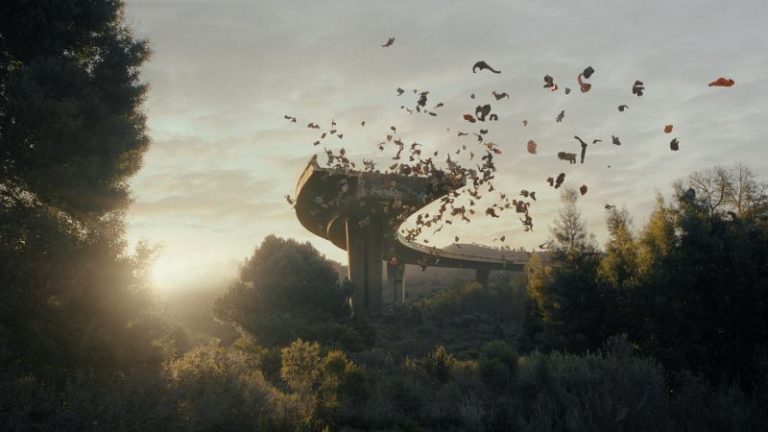For the past few weeks, people around the world have been thinking about which spooky character to dress up as for Halloween. But what if the scariest clothes you can wear are actually your own?
By now, you probably don’t think there’s anything particularly scary about your outfit. There may be nothing wrong with your style, but the real horror story begins on a deeper level: the materials your clothes are made of.
Less than 200 years after the first synthetic fibers were introduced, they are predicted to account for 73% of the world’s total textile production by 2030. Not only this, but the average polyester product can survive over 200 years in a landfill. It’s really tragic.
Fortunately, legal reforms are being introduced to curb the rise of a disposable fashion culture that has been driven by cheap synthetic clothing. In this context, The Woolmark Company has launched the global brand campaign “Wear Wool, Not Waste”, created by creative agency 20 (SOMETHING) in collaboration with Park Village and Studio Birthplace. .
The Woolmark Company is recognized as a world authority on wool and has an extensive network of relationships across the international textile and fashion industries. The campaign aims to highlight the environmental benefits of wool and make people aware that wool is the world’s most recycled apparel fibre, with natural, renewable and biodegradable properties. The purpose is
“‘Undead’ sustainability of synthetic fibers”
20(SOMETHING) has been working with Woolmark for the past three years, including on a strategic plan to identify opportunities within the sustainability category and define Woolmark’s voice and positioning in this area. Will Tucker, the agency’s co-founder and creative partner, says sustainability is an important cultural shift and a central focus for 20 (SOMETHING), so their aim is to help clients achieve this growing goal. The idea is to help them respond to the zeitgeist.
“Over the years, we have had the opportunity to work with the UK’s largest green energy provider, who was one of the first organizations to introduce plastic credits, allowing consumers to offset their carbon footprint over the course of a year. We also launched a shirt initiative,” Tucker said. 20(SOMETHING) also works with organizations dedicated to protecting an area of the Amazon rainforest the size of Norway to ensure that this important ecosystem remains untouched.
This recent collaboration with Woolmark builds on the success of ‘Wear Wool, Not Fossil Fuel’, launched in 2022, with 350 million barrels of oil used to produce each synthetic fiber. This year, I painted people covered in thick black oil to drive home this fact.
This year’s message focuses more on the environmental sustainability of synthetic materials, with 20(SOMETHING) SAW “Returning to visual storytelling to bring important, often overlooked issues to the national consciousness. “It was an opportunity,” Tucker said. The issue has been highlighted through campaigns such as Zombie Apocalypse, which juxtaposes wool’s renewable nature with “the ‘undead’ sustainability of synthetic fibers”.
“Instinctual fear”
“Wear Wool, Not Waste” is inspired by apocalyptic visuals seen in media such as “The Last of Us,” showing “zombie clothes” swarming an urban environment. Tucker explains how this metaphor “resonates with the audience and creates a visceral sense of fear regarding the effects of synthetic fibers.”
The agency considered other ideas, such as an “end of the plastic era” that would depict people peeling off their synthetic “skin” like layers of death, but the team felt the zombie apocalypse concept was the most impactful and appropriate. It was determined that
“As part of a three-year effort to educate our audience, a key challenge was to raise awareness about the often overlooked composition of fabrics,” says Tucker. Woolmark’s Filter by Fabric initiative addressed this issue by promoting clear product descriptions and better e-commerce filtering options to help consumers make sustainable choices.
Mr Tucker revealed that the results in the first year were encouraging, with consideration of wool increasing by 13% in the UK and 79% of viewers saying the campaign had made them reconsider the environmental impact of their clothes. did. “We aim to build on this momentum and further change consumer habits,” he added.
“Sophisticated cinematic aesthetic”
To develop the powerful “synthetic zombie” effect, Studio verse worked with Deadpixel on an extensive post-production process. According to Tucker, one of the most complex challenges was “transitioning from motion capture to impact-responsive animation, where synthetic clothing realistically falls apart upon impact, and then We increase reliability through full-body cloth simulation.”
Every element was planned with precision, from the filming locations to the high-end VFX. Tucker described how the team used LIDAR scans of real environments to “achieve a sophisticated cinematic aesthetic where the real and virtual worlds seamlessly blend to vividly bring the concept to life.” I explained how.
So, perhaps next Halloween (and every day in between), remember to wear wool, not waste.


